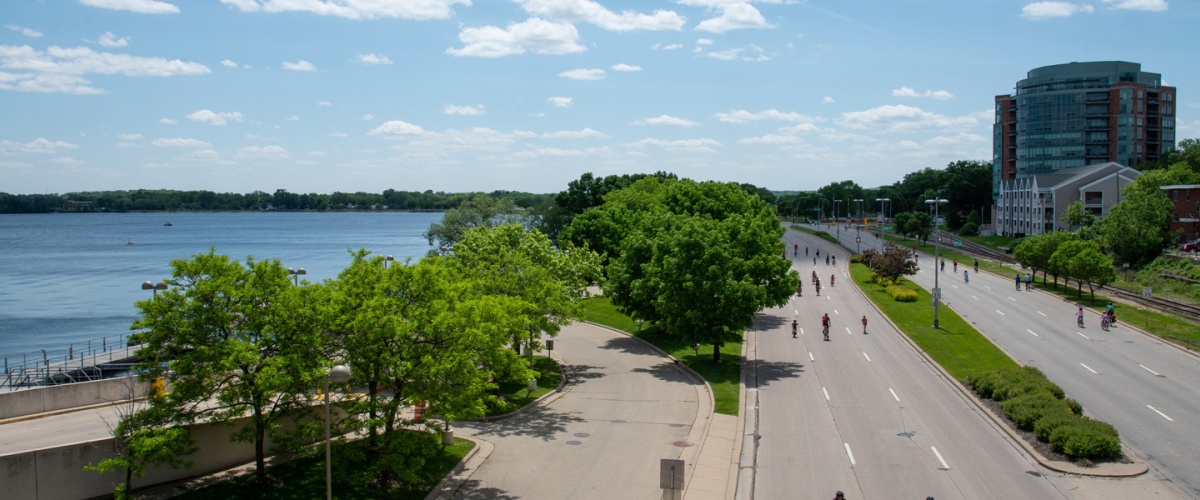
Celebrating 50 Years of Conservation Parks: Spotlight on Cherokee Marsh
As we conclude the celebration of 50 years of conservation parks in Madison, we focus your attention on Madison’s largest conservation park. So large, the more than 1,300 acres of Cherokee Marsh Conservation Park are divided into three unique units – Mendota, North and South. Cherokee Marsh – North Unit was designated a conservation park in 1971 when the Parks Division first created the Conservation Park program.
The largest wetland in Dane County, Cherokee Marsh, whose name dates to a 19th-century hunting club in the area, is located upstream from Lake Mendota, along the Yahara River and Token Creek. The marsh provides a habitat for many birds and animals through its diverse plant communities, drumlins and rocky hills rising from the glacial plain. Birdlife includes barred owl, red-tailed hawk, sandhill crane, white-breasted nuthatch, woodpeckers, and wood-warblers in migration.
The 122 acres of Cherokee Marsh Conservation Park, Mendota Unit has lowland forest with large-diameter red and white oak, black cherry, red maple, hackberry, and box elder. In spring, the forest floor has expanses of wildflowers including Dutchman's breeches, cut-leaf toothwort, and white trout lily. Also present are areas of shrub-carr, a wetland community of tall shrubs such as red-osier dogwood, aspen, and willow. The marsh-to-woodland boundary contains an alder thicket, a rare vegetation type for Dane County. The Mendota Unit’s roughly half-mile trail connects to Meadow Ridge Conservation Park and Meadow Ridge Park.
Cherokee Marsh Conservation Park, North Unit, with more than 900 acres makes it the largest all conservation parks, yet is just one piece in a complex of protected land that supports diverse wildlife and native plant communities in the marsh and adjacent uplands.
The park is situated on ancestral Ho-Chunk land. Within the park are two conical mounds constructed by Native Americans before European settlement. Agriculture was the dominant land use on the uplands and in more accessible portions of the wetlands, many of which were drained. Major restoration has included filling ditches to restore wetlands, converting old fields to tallgrass prairie, removing invasive woody species from oak woodlands, and prescribed burning. Explore 4.1 miles of trails and boardwalk through woods, prairie, and wetland. Enjoy views from two lookouts and a hilltop.
American lotus has been established in the river to protect the river shoreline from erosion and improve water quality. Restoration of oak woodland and oak savanna has resulted in increased numbers of woodpeckers, including the red-headed woodpecker, a Wisconsin Species of Special Concern. Parks management follows a snag protection policy to preserve dead, standing trees for wildlife.
Cherokee Marsh Conservation Park, South Unit includes 261 acres of restored prairie, oak savanna, and woodland. The 3.8 miles of trails meander through high ground offering views of sedge meadow, deep marsh, and the upper Yahara River. Three constructed ponds filter urban stormwater and provide wildlife habitat. A gravel boat launch and pier provide river access in the spring and summer, followed by snow-covered trails groomed for classic cross-country skiing in the winter.
On any day you can explore on your own, watch the Cherokee Marsh video or make plans to join a guided walk. On Wednesday, October 12, walk with Conservation Park Supervisor Paul Quinlan for the final Conservation Park Tour of the 2022 season. The slow-paced walk in the North Unit starts at 5:30pm and includes a steep hill providing vast and gorgeous view.
For a more easy-paced short guided walk, or aboard a tractor-pulled haywagon, join us at Hayrides & Hikes on Saturday, October 22, from 1-4pm. Volunteers from the Friends of Cherokee Marsh lead free, short nature hikes and Parks staff operate the hayrides for just $3 per person.
Bird & Nature Adventures offers guided walks, led by local nature experts, on the first Sunday afternoon each month, year-round through the North Unit. Also open year-round are the restrooms located at the North Unit trailhead and gravel parking.
Each conservation park offers visitors glimpses of the past while enjoying the wildlife and nature of today. What will the next 50 years bring? We continue to learn and through partnerships and volunteers, both past and present, we work to preserve the land and make it accessible for generations to explore and enjoy.
Related stories, events, and videos
- Cherokee Marsh video
- 50 Years of Conservation Parks
- Edna Taylor Conservation Park
- Owen Conservation Park
- Find a Conservation Park
- Conservation Park Events
- Madison Parks YouTube Channel
Images


